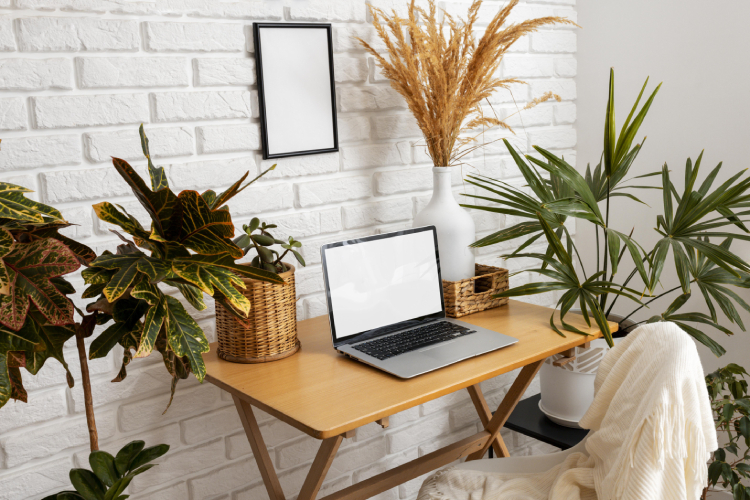In today’s flexible work environment, having a well-designed home office can significantly impact productivity and overall comfort. Whether you’re setting up a dedicated workspace or optimizing an existing one, consider these essential tips on ergonomics, organization, and creating a productive work environment.
Prioritize Ergonomics
Invest in a Quality Chair
A comfortable chair with adjustable height, lumbar support, and armrests is crucial. Your feet should rest flat on the floor or on a footrest, with your knees at a 90-degree angle. An ergonomic chair will help prevent back pain and promote good posture.
Desk Height Matters
Your desk should be at a height where your elbows are also at a 90-degree angle when typing. Consider a desk with adjustable height options, or use a desk converter if you prefer alternating between sitting and standing.
Monitor Placement
Position your monitor at eye level, approximately 20 to 30 inches away from your face. The top of the screen should be at or slightly below eye level to avoid straining your neck.
Keyboard and Mouse Positioning
Keep your keyboard and mouse close to each other and at a height that allows your wrists to remain straight. Use a wrist rest if necessary to reduce strain.
Optimize Organization
Declutter Your Space
A tidy workspace promotes focus and efficiency. Regularly clear out unnecessary items and keep only essential tools and supplies within reach. Use desk organizers, shelves, and drawers to store documents and office supplies neatly.
Implement Effective Storage Solutions
Use filing cabinets, bookcases, or wall-mounted shelves to keep your workspace organized. Labeling storage containers and files can also help you quickly find what you need and maintain order.
Cable Management
Tangled cables can be distracting and create a cluttered appearance. Use cable organizers or clips to keep cables tidy and out of sight. This not only improves aesthetics but also reduces the risk of accidents.
Create a Productive Work Environment
Proper Lighting
Good lighting is essential for reducing eye strain and maintaining focus. Position your desk near a window for natural light, and invest in adjustable task lighting for your workspace. Avoid glare on your screen by positioning lights to the side or behind you.
Personalize Your Space
Add personal touches to make your office feel welcoming. Choose decor, colors, and accessories that inspire you and make the space enjoyable to work in. Plants, artwork, and comfortable elements can boost mood and creativity.
Minimize Distractions
Designate your office space as a work-only area to help separate professional and personal life. Consider using noise-cancelling headphones or a white noise machine to block out distractions if needed.
Ensure Good Air Quality
A well-ventilated space is crucial for comfort and concentration. If possible, open windows regularly or use an air purifier to maintain fresh air and reduce pollutants.
Conclusion
Creating an efficient and comfortable home office involves more than just a good desk and chair. By focusing on ergonomics, staying organized, and cultivating a productive work environment, you can enhance both comfort and productivity. With these tips, your home office can become a space where you feel motivated, focused, and ready to tackle any task that comes your way.

